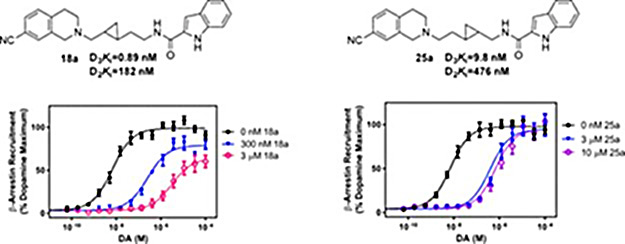Dopamine D2-like receptor antagonists have long been prescribed for the treatment of schizophrenia, however, their lack of efficacy and side effects have prevented them from being considered for substance use disorder treatment. The dopamine D3 receptor (D3R) has been a target of pharmaceutical interest due to its discrete localization in certain areas of the brain linked to rewarding and motivational characteristics of addictive drugs.
Scientists supported by the National Institute on Drug Abuse synthesized a series of molecules to investigate structure-activity relationships at the D3R. Their research resulted in the identification of two noncompetitive D3R-selective antagonists, 18a and 25a shown above, that provide new leads toward novel drug development.
Study:
- Kumar, V., et al. Synthesis and Pharmacological Characterization of Novel trans-Cyclopropylmethyl-Linked Bivalent Ligands That Exhibit Selectivity and Allosteric Pharmacology at the Dopamine D3 Receptor (D3R). Journal of Medicinal Chemistry. https://www.ncbi.nlm.nih.gov/pubmed/28186762

